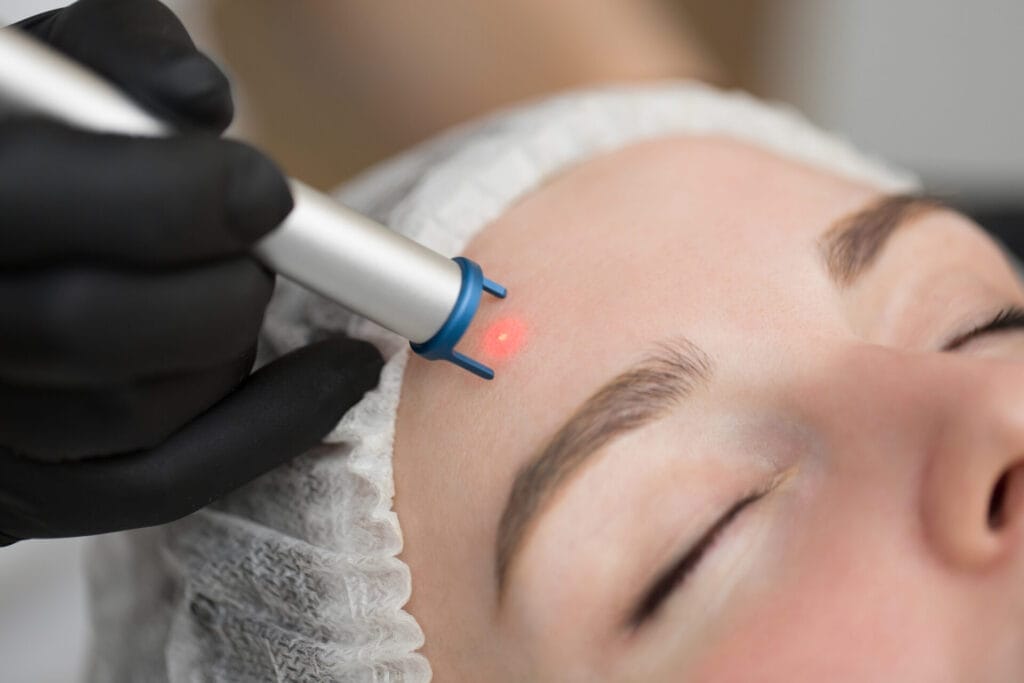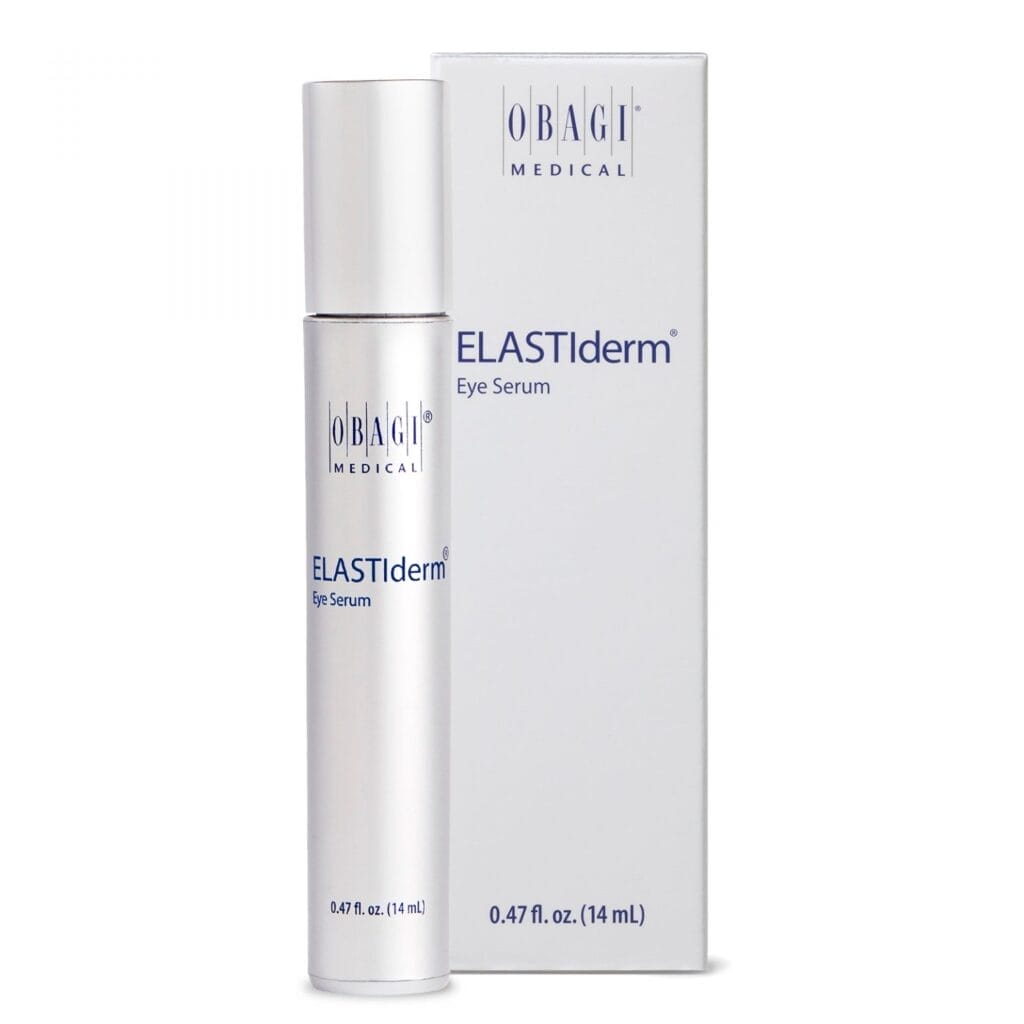Under-eye circles are a common concern among professionals who often face the visible signs of their high-paced lifestyles right on their faces. While lifestyle adjustments and topical treatments are often discussed, understanding the science behind under-eye circles can lead to more informed and effective interventions.

Scientific Insights into the Causes of Under-Eye Circles
The etiology of under-eye circles is multifaceted, encompassing anatomical, physiological, and lifestyle-related factors:
- Pigmentation and Ethnicity: Studies indicate that increased melanin production or post- inflammatory hyperpigmentation, particularly prevalent in certain ethnic groups, can contribute to darker pigmentation under the eyes (Kounidas et al., 2022).
- Vascular Dynamics: Blood stasis or pooling due to poor circulation can cause a bluish hue under the eyes. Research by Samaan & Cartee (2022) suggests that the visibility of venous congestion in the lower eyelid skin can be a contributing factor.
- Structural Anatomy: Loss of subcutaneous fat in the tear trough area, either through aging or genetic predisposition, can create a hollowed look that casts shadows, accentuating dark circles (Michelle et al., 2021).
- Sleep Deprivation: A study by Sheth et al., (2014) established a link between sleep deprivation and increased signs of skin aging and reduced skin barrier function, which can contribute to the appearance of under-eye circles.
- Fluid Retention: Factors such as high salt intake, alcohol consumption, and hormonal changes can lead to fluid retention, causing puffiness and exacerbating shadows (Matsui et al., 2009).

Research-Backed Strategies for Improvement
While under-eye circles may not always be completely avoidable, evidence-based strategies can help reduce their prominence:
- Topical Vitamin C: A study by Mitsuishi et al., (2004) found that topical application of vitamin C reduced dark circles by strengthening the skin and improving collagen production.
- Retinoids: Topical retinoids have been shown to promote dermal collagen production, potentially improving the appearance of dark circles related to thinning skin (Sawant & Khan 2020).
- Hyaluronic Acid Fillers: Injectable fillers containing hyaluronic acid can temporarily correct volume loss in the tear trough area, reducing the appearance of dark circles (Goldberg & Fiaschetti, 2021).
- Laser Therapy: Laser treatments targeting pigment reduction or skin resurfacing have also been used to improve under-eye discoloration (Barton et al., 2003).
- Platelet-rich plasma (PRP) therapy is increasingly being used for the cosmetic treatment of under-eye circles, leveraging its potential for tissue regeneration and healing. According to a study by Mehryan et al. (2015) in the “Journal of Cosmetic Dermatology,” PRP treatment showed significant improvement in the skin quality and dark circles under participants’ eyes. The therapy involves injecting a concentration of the patient’s own platelets to stimulate collagen production and rejuvenate the skin.
- Peptides: Peptides serve as building blocks for proteins such as collagen, elastin, and keratin. These proteins are essential for maintaining the skin’s firmness, elasticity, and texture. In the treatment of the eye area, peptides can be particularly beneficial due to their ability to signal skin cells to regenerate, thus helping to reduce the appearance of fine lines, wrinkles, and dark circles. (Reivitis et al., 2018)
A Comparative Analysis of Leading Professional Serums for Under-Eye Circles
To aid in selecting the right product for their clients, a comparison of several prominent professional serums is essential. This article will provide an in-depth look at several top-tier eye serums and creams, comparing their formulations, intended effects, and unique properties.
Proskin’s Eye Sorbet

ProSkin’s Eye Sorbet is a medical-grade eye cream that offers rapid wrinkle-reduction with a cooling effect that enhances micro-circulation. Growth factors and cross-linked hyaluronic acid provide deep hydration, stimulate collagen formation and create a soft-focus effect on wrinkles. The cream is formulated to reduce eye bags and dark circles while strengthening the skin’s barrier function.
Key Ingredients: Cross-linked hyaluronic acid, Bio-placenta, Folic acid, Acetyl glutamine
Unique Benefits: Instant wrinkle-erasing effect, reduces eye bags and dark circles, enhanced collagen production.
Skinceuticals A.G.E. Eye Complex
The A.G.E. Eye Complex from Skinceuticals is a high-end serum that focuses on treating not only dark circles but also puffiness and crow’s feet. It utilizes a combination of blueberry extract, proxylane, and a complex of flavonoids and peptides to fortify the skin’s matrix and improve the look of dark circles over time.
Key Ingredients: Blueberry extract, proxylane, flavonoids, peptides. Unique Benefits: Multi-functional treatment for various signs of aging, supports skin’s natural repair process.

La Roche-Posay Pigmentclar Eyes

La Roche-Posay’s Pigmentclar Eyes serum is designed to target both blue and brown dark circles. It contains phe-resorcinol, caffeine, and light-reflective pigments to improve the appearance of under-eye circles by reducing pigmentation and increasing circulation.
Key Ingredients: Phe-resorcinol, caffeine, light-reflective pigments. Unique Benefits: Dual-action on different types of dark circles, contains thermal spring water known for its soothing properties.
Obagi ELASTIderm Eye Serum
The ELASTIderm Eye Serum from Obagi is another contender, formulated with a bi-mineral complex and malonic acid designed to help restore elasticity and build collagen, thereby reducing under-eye circles that result from thinning skin and loss of firmness.
Key Ingredients: Bi-mineral complex, malonic acid. Unique Benefits: Focuses on elasticity and firmness, rollerball applicator to promote circulation during application.

Neocutis Lumière Illuminating Eye Cream

Neocutis Lumière is an eye cream that doubles as a serum with its potent PSP (Processed Skin Cell Proteins) blend. It is particularly aimed at rejuvenating the skin’s appearance while diminishing dark circles and fine lines.
Key Ingredients: PSP (Processed Skin Cell Proteins), hyaluronic acid, caffeine. Unique Benefits: Promotes skin rejuvenation and healing, hydrating properties support plump and youthful look.
Comparison Overview
When comparing these serums, it’s important to note their targeted approaches and key ingredients:
- ProSkin’s Eye Sorbet stands out with the use of Bio-Placenta derived growth factors and cross-linked hyaluronic acid (the same HA used in dermal fillers) to rejuvenate the delicate eye area.
- Skinceuticals’ A.G.E. Eye Complex offers a comprehensive anti-aging solution that improves under-eye circles as part of a broader strategy to combat signs of aging.
- La Roche-Posay Pigmentclar Eyes is notable for its dual action on both blue and brown dark circles, making it versatile for various pigmentation issues.
- Obagi ELASTIderm Eye Serum specializes in improving elasticity with its unique bi-mineral complex, which may be especially effective for those experiencing loss of firmness.
Conclusion
For aesthetic professionals seeking the ideal serum for treating under-eye circles, it’s crucial to consider the specific needs of each client. Whether the concern is pigmentation, puffiness, loss of firmness, or a need for immediate brightening, there is a serum available to address these issues. ProSkin’s Eye Sorbet provides an excellent option with its growth factor-rich formula and instant wrinkle reduction. However, depending on individual client concerns, other products mentioned may also offer desirable benefits that cater to the multifaceted nature of under-eye circle treatment.




